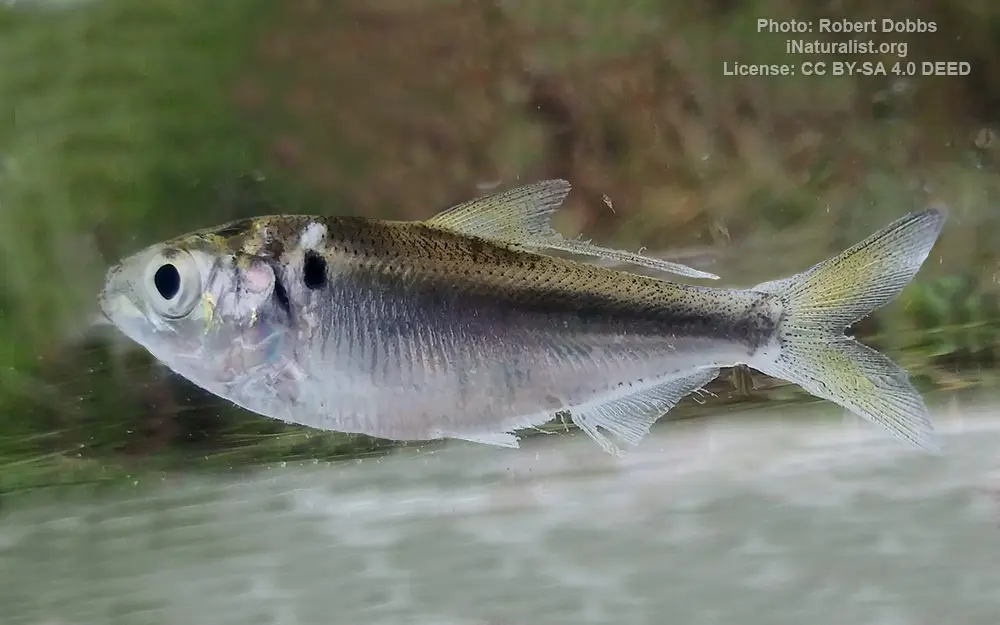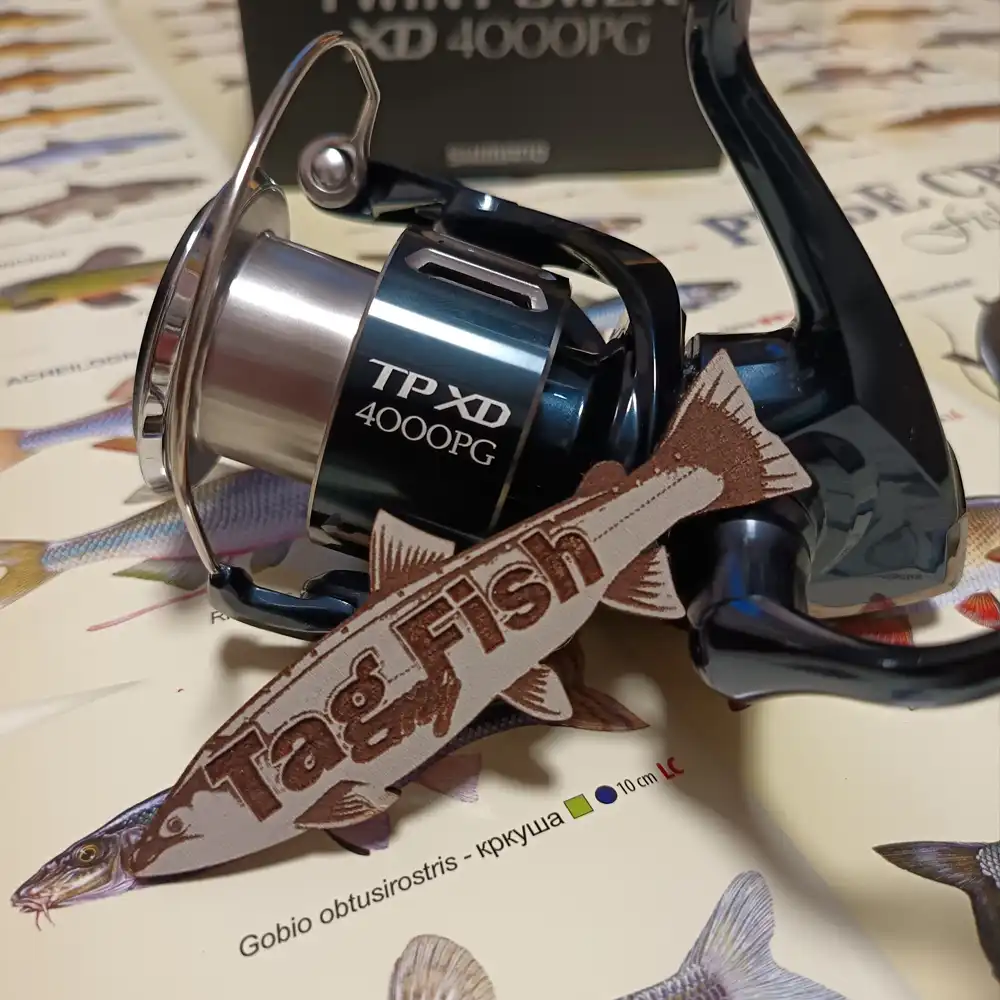Threadfin shad (Dorosoma petenense)

Image source: Robert Dobbs | inaturalist.org
General data
- Main name: Threadfin shad
- Climates: Subtropical
- Habitat: Freshwater
- Native: North America
- Distribution: Rio Grande, Aucilla River, Suwannee River, Ochlockonee River, Pascagoula River, Pearl river (Gulf of Mexico), View all... Neches River, Sabine River, Papaloapan River, Choctawhatchee River, Brazos River, Guadalupe River (Texas), Trinity River (Texas), Caloosahatchee River, Apalachicola River, Colorado River (Texas), Mobile River, Mississippi River, Atchafalaya River
Classification
- Genus: Dorosoma - Gizzard shad
- Family: Dorosomatidae - Dorosomatidae
- Order: Clupeiformes - Herrings
- Class: Teleostei - Ray-finned fishes
- Superclass: Osteichthyes - Bony fishes
Description
The threadfin shad (Dorosoma petenense) is a small pelagic freshwater forage fish common in lakes, large streams and reservoirs of the Southeastern United States. Like the American gizzard shad, the threadfin shad has an elongated dorsal fin, but unlike the gizzard shad, its mouth is more terminal without a projecting upper jaw. The fins of threadfin shad often have a yellowish color, especially the caudal fin. The back is grey to blue with a dark spot on the shoulder. D. petenense is more often found in moving water, and is rarely found deep in the water column. It occurs in large schools, sometimes with gizzard shad, and can be seen on the surface at dawn and dusk. The threadfin shad may reach lengths of 8 in (200 mm), but only rarely. This fish is very sensitive to changes in temperature and dissolved oxygen, and die-offs are frequent in late summer and fall, especially when water temperature drops to 42 °F. The threadfin shad is a favorite food for many game fishes, including striped bass, largemouth bass, smallmouth bass, and catfish. This fish is widely introduced throughout the United States as a forage for game fish. The threadfin shad is native to the U.S., west of the eastern Appalachian Mountains, through the Mississippi basin all along the Gulf of Mexico down to Belize. This species tends to do best in large lakes and rivers. The construction of dams has created more reservoirs, providing more water bodies for the shad to inhabit. This has expanded the home range of the fish, as has the rise in temperatures in northern lakes. Threadfin shad have been introduced outside of their original as a supplemental forage. Populations have become established on the American West Coast from Oregon south to San Diego Bay and the Gulf of California.


